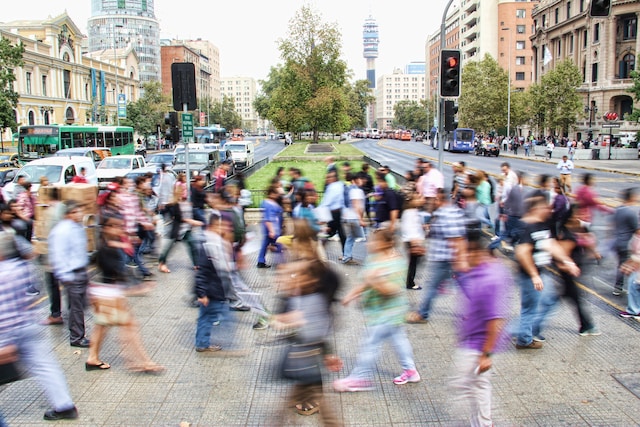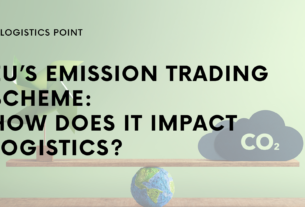The profile of logistics has shifted during the last couple of years. Shortages of different types made the industry more visible which brought new opportunities and challenges. The industry is now clearly seen as a driver for economic development and the days of low-skill and low-tech jobs are gone. We spoke to Steve Scott – EMEA Future Communities Lead, GHD, about the future of logistics and community engagement, how new developments are bringing people onboard and why it matters.
Join us for our next London Logistics Networking where we will discuss the role of logistics in communities. Get your ticket here!
What are future communities? How do they impact the commercial development?
One of the core tenets that underpins what a future community is, is that people need to be at the heart of any development or planning. It may sound obvious but when you assess many towns and cities, including more modern developments, there is much room for improvement to truly put people, rather than short-term profit, back into the design and planning.

The industry has traditionally approached infrastructure solutions from a narrow and linear perspective, often coming up with a solution that is developed from the technical expertise of the team or individuals involved. Now when we deal with development and infrastructure, there’s a very complex situation influenced by a whole range of different factors and drivers. For example, our clients now talk about their customers and customers’ experience much more than before because of their influence over the organisations.
In this context, the ability to devise a sensible solution to a problem in a linear way is not possible anymore.
There are so many different factors and complexities around how we look to evolve society, places and cities, that you need to bring those different perspectives together. We like the idea of diversity of thought.
With Future Communities, we’re trying to incorporate more people and perspectives into the solution. We think from the point of view of true social value, the outcome the infrastructure will create, and the experience of people that could be impacted by it. We think, what do they want? What do they need? Who can use a piece of infrastructure now and in the future?
What trends are you noticing and how will they impact the way goods move around our cities?
At GHD through the conversations we are having with our clients, communities and through the data we have access to, we are seeing a shift in behaviours across many areas. From the way people work and how they move around, to the way our existing community and business assets are built and are responding to climate threats, and the increasing need for socially equitable and affordable public and residential infrastructure.
Mobility is interesting because it is the relationship between people and place, whether for work or leisure. When you bring in the net zero agenda on how we move people, goods and services around the country, the one way to unlock solutions is through data: looking at interconnected journeys from start to finish.
Communities should be enabled through connecting skills with infrastructure and transportation to improve community experiences, and logistic and supply chain benefits for local businesses. Against a backdrop of increasing urbanisation and shifting human behaviours, decision makers have more dynamic factors to consider than ever before. With limited space to accommodate everyone’s needs, we need to effectively plan and build more sustainable, equitable transport networks.

Tech & Social Driven
A lot of the sector is now technology driven. This has changed the way local authorities are looking at proposals and what it takes for such proposals to be approved. The industry is now not just relying on accessibility to good infrastructure but also a highly skilled workforce.
The way companies engage with the public, however, is out of date. There should be ongoing communication and engagement but it takes a lot of effort and resources companies might not have. This will pay out in the longer term. It can reduce overall costs as the chances of derailment are much lower.
How far away are those changes? What needs to happen to achieve them?
As an industry, we must broaden the conversation and add different perspectives into the decision-making process of urban development, which also requires the public sector to do much more.
For example, the approach to flood defence is often reactive: ‘we have a flood event, so let’s put up loads of hard infrastructure’. We have to move beyond that and into creating infrastructure that has resilience built in. When we understand the risks around it and the societal impacts, we can make a much more balanced decision rather just than a financial decision. We will see the public and private sectors coming together much more; hence the rules of engagement need to change. However, from our conversations with public sector clients, I can see they recognise these challenges and are looking to do things differently.
Would buildings that incorporate communities look different to those we already recognise as logistics hubs?
We have started to move into a different territory. There are now more developments that are mixed use. The logistics space is combined with offices or technology backrooms, for example.
Spaces are now created where various companies can coexist and the supporting infrastructure is much better and broader. I believe we will see fewer purely logistics and warehousing developments.
One of the reasons is that the sector needs and wants to make itself more attractive. This can happen by creating more interesting and mixed-use sites. Maybe some developments will look different to what we have today. However, it is not about the look but about how such buildings are used.
Can we have a truly sustainable community where businesses also flourish? How will it look?
In short, yes. We know communities are at their best when they are connected, resilient, productive, and inspired. Productivity specifically speaks to the fact that businesses and commercial interests must take priority and truly flourish for a community to be balanced and sustainable.
At GHD, our philosophy is that productive communities are about improving workforce and asset performance to create investable places. It’s about reimagining and redesigning the future of work, using modern methods of construction and behavioural insights, to create community-wide fairness, equity, access, diversity, and affordability.
Is the fact that rules and regulations are slow to change holding back some of these developments?
They are and it is an ongoing challenge. The pace of change we have been going through is massive. This has changed the way we interact with the social infrastructure. Planning is still what it used to be and it takes time for it to catch-up. We have done some recent studies and the methodology used there is one that has been used for a long time. Post-Covid, however, we need to reevaluate the methodology. The importance of the sector has changed and the requirements are different. Therefore, using guidance from 20 years ago is a problem.
There are many forward thinking local authorities that are doing things differently and realise a new way is needed to bring people back to the town centres. ✷
Join us for our next London Logistics Networking where we will discuss the role of logistics in communities. Get your ticket here!

